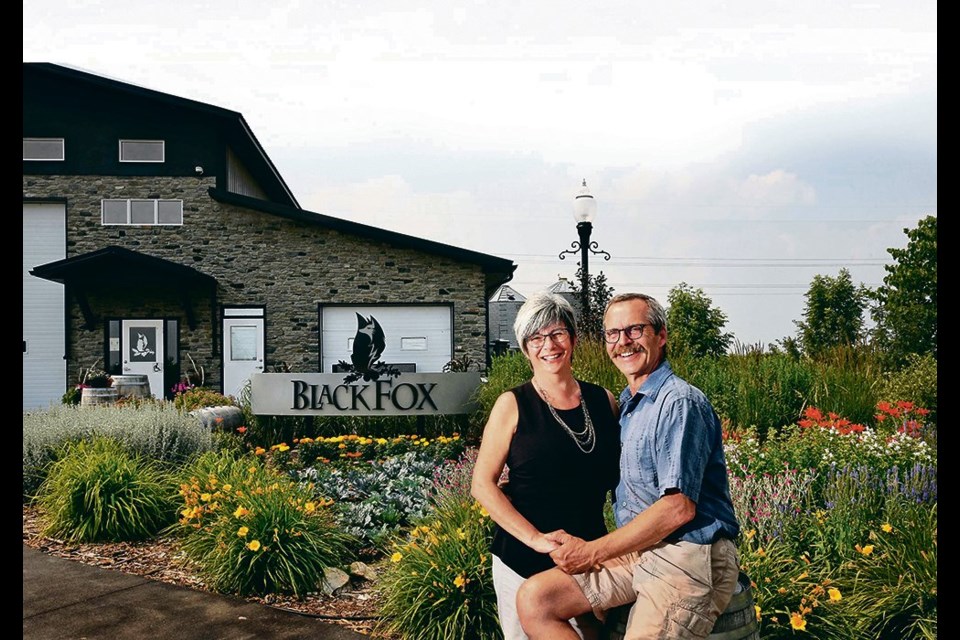When John Cote and Barb Stefanyshyn-Cote sold their Saskatchewan grain farm 11 years ago they were on the top of their game.
They were fifth generation farmers, Canada’s Outstanding Young Farmers alumni, had studied and consulted around the world, Barb was a Nuffield Scholar and together they farmed 5,000 acres of owned and rented land.
Before that, the couple had taken a pause. The world travellers wanted to share their travel experience with their children. They spent a year in Mexico and another in Chile to allow their children to experience new countries and cultures.
“While we were doing that, John was doing consulting for a company in Kazakhstan. The company wouldn’t work with a farm with less than 100,000 acres. It looked like the writing was on the wall. Get big or get out,” said Barb.
When the family returned to the farm in Leask, Sask., they took a hard look at their future and wondered if they wanted to follow the trend of larger farms.
“If you are going to farm those acres, you can’t do it on your own. Will you be able to hire people? Will the community be large enough that our grandchildren have a school? It was real forward thinking.
“When we really looked deep into the future and what we wanted to do in our own careers, large grain farming wasn’t it. We wanted to do something that was closer to the customer. Grain farming is lovely, but you never know where that grain ends up,” she said.
“We had been in places where farmers were making a living on five or six acres of land. They were growing a higher value crop. We thought that was more for us as opposed to becoming larger grain farmers.”
Eighteen months after their sabbatical they sold the farm and changed direction.
The couple didn’t retire from farming, they just did things differently. They bought 80 acres of land outside Saskatoon and started growing flowers, vegetables and fruit trees for a possible fruit winery.
But it takes a lot of vegetables to make a living, said John.
“We figured out really quickly growing another commodity wasn’t going to be the answer.”
They also realized fruit wines were a niche product and had limited sales. What they did discover was distilling grain into spirits had plenty of potential and they used their knowledge of growing wheat, barley and rye, all grain that could be distilled.
In 2010 Black Fox Farm and Distillery was born and has since become one of the country’s largest craft distilleries.
They turn the grain, flowers and fruit grown on their farm into high-end gin, whisky and liqueurs and ship the spirits around the world and some provinces.
“That is not bad for a couple little peanuts out of Saskatchewan. We’re doing really, really well,” said Barb.
It was the couple’s love of learning that enabled them to flow from grain farming to distilling.
“Both Barb and I like continuing education and have always taken it very seriously,” said John, who started taking classes through the Institute of Brewing and Distilling in the United Kingdom.
Turning grain into award-winning whisky was easy compared to the marketing of their new product, said John.
“We weren’t quite prepared for the learning we needed to do in marketing. That was the thing that was harder.”
From the beginning, they wanted their Black Fox products to be the highest quality, they wanted consumers to understand their commitment to environmental stewardship and they wanted a connection with their customer.
“We talk to the customer about why we rotate fields when they can’t find the flowers in the same field every year, the importance of crop rotation, bees, integrated pest management and why we embrace using herbicides. Those are the messages we talk to customers about,” she said.
“Quality and authenticity is critical,” added Barb, who said part of their story is letting the customers know they take the grain, mash it, ferment it and distill it all on their farm.
Social media is key to promoting their brand and their product. With a full-time social media person and a graphic artist, they use all the online platforms to connect with their customers.
“Social media is huge for us.”
John said like agriculture, a lot of their success comes down to good, solid communication and being open and honest about their farm, their farming practices and their production practices.
“We know it is not perfect, but we are working towards making it perfect.”

